From Wittgenstein to Thom Yorke many remarkable people have resided in the honey stone terraced houses of St John Street in central Oxford, built to accommodate the growing number of tradespeople serving the University in the late 1820’s. But there is only one blue plaque. Displayed on the wall of number 16 it remembers the artist William Turner, who lived and worked here from 1833 until his death in 1862. Close by The Oxford Sausage headquarters, it is not uncommon to witness tour guides introducing the place as the home of JMW Turner, arguably England’s most famous Romantic painter. But this is a different Turner altogether.
I can understand the confusion. They were both artists known as William Turner. They were roughly contemporaries, both painted in watercolour. But though JMW visited Oxford – his great portrait of the High Street hangs on the walls of the Ashmolean Museum and his seven views of the city made for the Oxford Almanack are well known – he never actually lived here. Our William Turner was Oxfordshire born and bred. The city was where he spent the last 30 years of his life and much of the subject matter for his pictures came from the landscape around. This is William Turner of Oxford. He’s not well documented or celebrated. I wanted to get to know him better.
And so, at the inspired suggestion of Colin Harrison, Senior Curator of European Art at the Ashmolean Museum, we meet under the blue plaque last Sunday morning for what was to be an eight-mile pilgrimage to Shipton-on-Cherwell. Turner’s uncle, also called William Turner once owned the Manor House there and the churchyard is where our Turner is buried. We can walk all the way along the Oxford Canal, Colin assures me, and all being well we should make the Boat Inn at Thrupp in time for lunch. It’s only a short distance from there to Turner’s tomb. Colin has generously promised to fill me in on Turner’s life and work as we go.
We start at where the canal that was built to bring coal from Coventry ends. Completed in 1790, the channel that would have taken it under Hythe Bridge Street is now bricked up and the canal basin has been a car park for as long as I remember. But turning off the busy road it isn’t long before the noise from the traffic subsides, and that of the natural world takes hold. Storms have been forecast so we have bought our macs, and Colin sets off at speedy pace. Past Worcester College gardens, then the trap grounds, and after that there’s allotments and woodland and reed beds. Dragonflies and meadow browns skim the water. Willowherb and purple loosestrife line the canal banks and blackberries are ripe for picking. This is the unspoiled countryside so beloved of William Turner.
He was born in Black Bourton near Bampton in November 1789. But when he was just two years old, his father died. Adopted by his prosperous uncle, (both the older Turner’s children had not survived past infancy,) he lived with him first at Burford then the Manor at Shipton-on-Cherwell. Recognising Turner’s artistic talents, he was sent to London aged 14 as an apprentice to John Varley, the leading light of the English school of water colour painting at that time. By all accounts he was a wonderful teacher. “Nature wants cooking,” he is known to have pronounced to his pupils. “Every picture ought to have a look there!” and “Flat tints are like silence, in which you can hear the faintest whisper.” Our Turner lapped up every word.
And it seems at first he made quite a stir. He was elected the youngest ever associate member of the newly formed Old Watercolour Society aged 17 and contributed three drawings to its annual exhibition all of Oxfordshire, all snapped up. Indeed, he continued to send pictures every year even after he returned to Oxford to live, in around 1810. During the 55 years of his membership, he contributed a whacking total of 455 paintings. So why don’t we know them better? The delightfully romantic view of the city as the harvest is gathered on the slopes above, ‘Oxford from Hinksey Hill’, which I have as a print, was the only picture of his I knew well.
I have bought a thermos, so we find a handy bench at Duke’s Lock, the point at which the canal links to the river Thames. “One of the great glories of British painting are watercolours,” says Colin. “But unless you collect them most people don’t know even the main artists. Who has heard of John and Cornelius Varley, or David Cox and William Callow? They were great figures in their day, but nowadays (partly because there are so few exhibitions of watercolours and also because they can’t be displayed in museums permanently), people don’t know about them.”
And although Colin believes William Turner, despite his early promise, became a proficient and imaginative artist, nobody could claim he was a ‘great’ artist, and his paintings have never attracted large sums of money. “It is however quite difficult to mistake his work for anybody else,” he admits. ‘And that’s really the test. It’s partly the subject matter but he was also very technically astute. His use of good quality paper, and body colour gives his pictures a solidity as well as longevity. You can tell at 20 yards yes that’s Turner of Oxford, I can see that.”
And so we continue on through Turner of Oxford country, a walk he must have trod on many an occasion maybe to visit his uncle, maybe lugging his painting equipment with him. Yes, as we embark on the long trudge through Kidlington, once a tiny rural enclave that has become England’s largest village, it is clear the towpath is now a magnet for runners and cyclists. Pretty Thrupp where we stop for lunch attracts its fair share of Sunday day trippers. But there is a timeless tranquillity to the fields and meadows we pass. Besides as we reach the bridge from which we leave the canal and take the path up to the Church of The Holy Cross built on a bank of the river’s floodplain at Shipton-on-Cherwell the black clouds have receded, and the sun has come out.
This is the bridge that Turner must have crossed to reach the streams and water meadows around the river that features in so many of his pictures. Especially in his beautifully detailed ‘Waterlilies on the Cherwell’ series, the river far closer to the church Turner portrayed 200 years ago than it is today. But he rarely (Ed: see comments section below) painted the canal or the railway that was to arrive later. His was the countryside pre-Industrial Revolution. And although he made numerous sketching tours and painted landscapes in Scotland, North Wales and the North Country, as far as we know he never left the UK. ‘Eel traps on the Cherwell’, ‘Stonehenge, stormy day’, ‘Harvest Scene’, are all titles that suggest the distant past, a whiff of nostalgia and pastoral idealism.
That John Ruskin so admired and championed William Turner of Oxford in later life for his meticulous study of nature (he compared Turner’s skies to those of Constable) must have come as some consolation to what seems to have become a modest life in St John Street. Here he acted as drawing master to the likes of the Oxford architect TG Jackson who describes him as looking ‘like a parson of the old school, dressed in black and wearing a white tie.’ The job was however an influential one at a time when it was felt that all undergraduates should learn how to draw, an idea firmly established when Ruskin opened his School of Drawing at the University in 1871. Besides it provided him with the income his painting didn’t for the rest of his life.
Apart from a brief mention in the Athenaeum, his death passed unnoticed by the rest of the press. And since he died, only two exhibitions have been held in his name. One in the University Galleries in 1895, (now the Ashmolean) around the corner from where he once lived. The other in the Oxfordshire County Museum in Woodstock in 1984, the place that was his spiritual home. But at Shipton-on-Cherwell you cannot escape his presence. Though visitors might come to see The Manor, (it’s where Richard Branson recorded Mike Oldfield’s ‘Tubular Bells’ I am told by an eager boat owner) the church is full of reminders of our William Turner of Oxford. For here he was married. There is a memorial chancel screen with a brass plaque that reads, ‘Erected in memory of William Turner of Oxford, Water Colour Painter and architect of this church,’ referring to his design for the rebuild in 1831. Though his personal associations with the place may explain why he made few changes. As Colin and I sit on the bench in front of the stone slab under which he is laid to rest a beautiful Bengal cat with leopard-like markings joins us to pay our respects to the memory of William Turner of Saint John Street Oxford. He died on August 7, 1862, the exact same day as his uncle’s estate at Shipton was sold. A man from a bygone age. With a personal connection to the natural landscape. I feel I know him a little better now.
Main picture credit: Shipton-on-Cherwell, evening, by William Turner of Oxford.
Courtesy of Karen Taylor Fine Art.
It shows the manor house and part of the estate of the artist’s uncle William Turner and the Church of the Holy Cross, amongst the trees to the right of the house. The artist built the church, in fourteenth -century style, at the expense of his uncle. It is thus an intensely personal work in which the artist depicts his home and the only building he designed.
Contributing photographer John Milnes
Grateful thanks to Colin Harrison for his eloquent, fun and knowledgeable guidance along the canal to Shipton-on-Cherwell. And for leading me at such a pace.
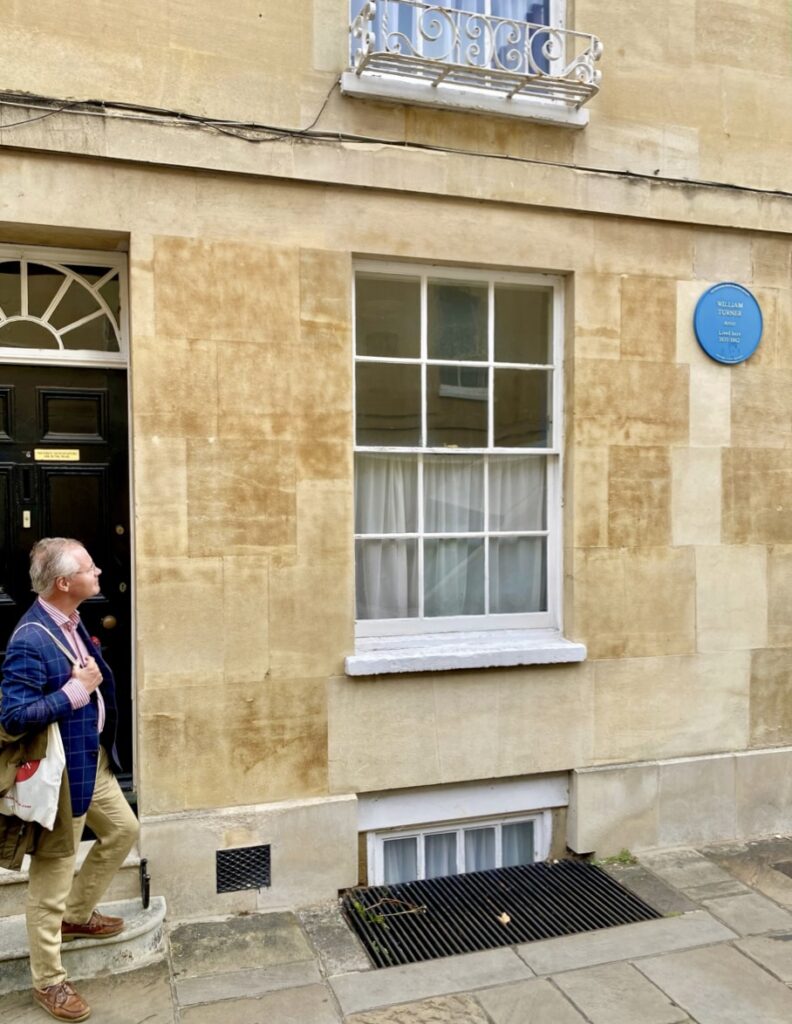
Colin Harrison at 16 St John Street where our journey began.
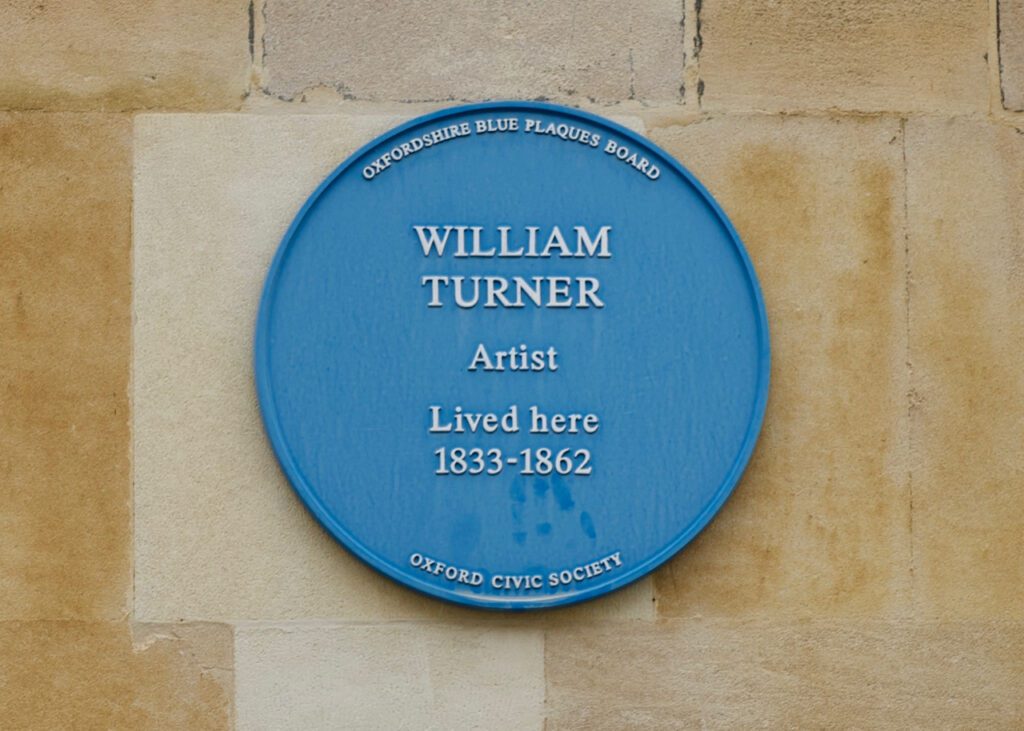
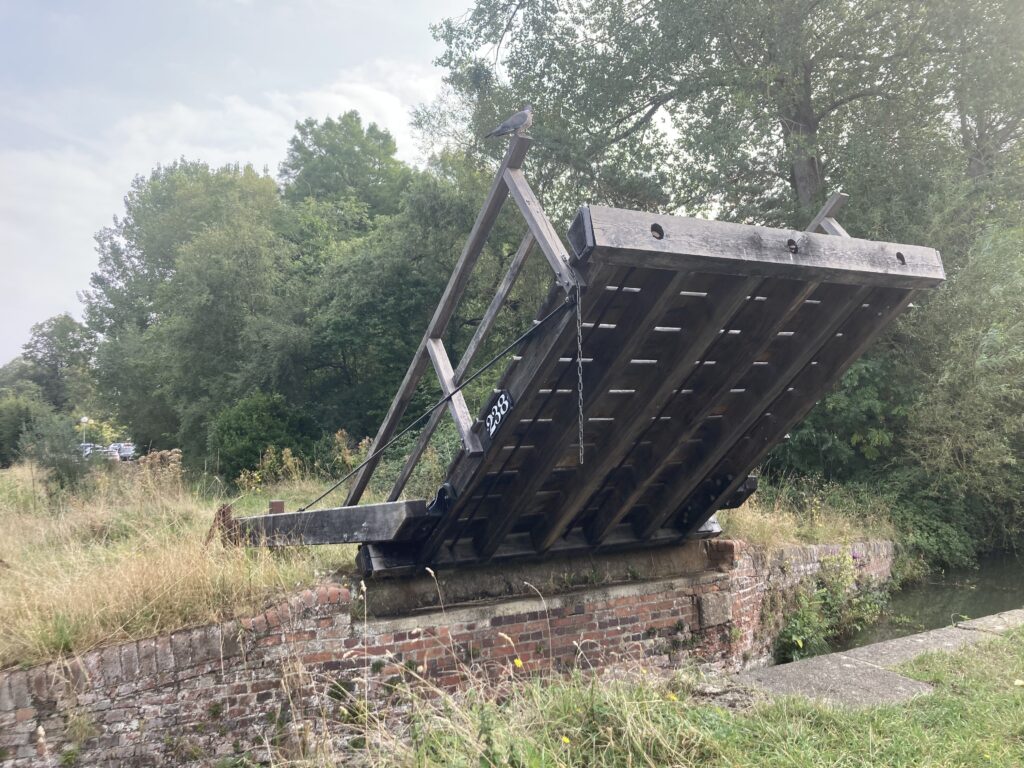
One of the many simple black and white lift bridges we passed.
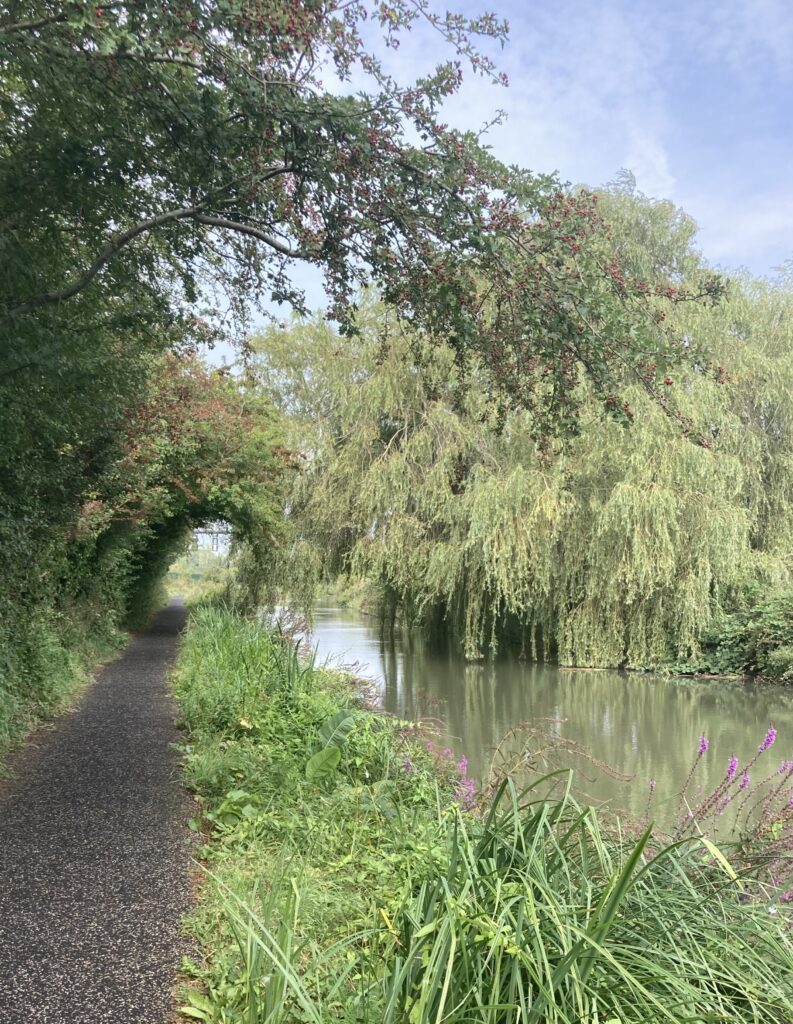
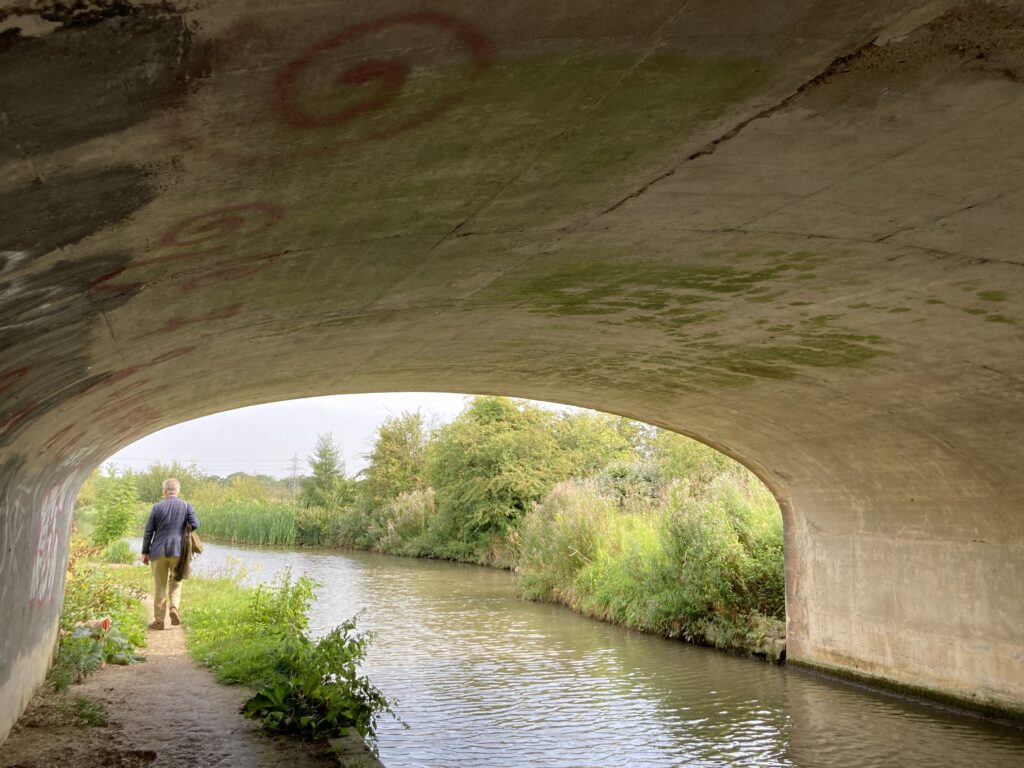
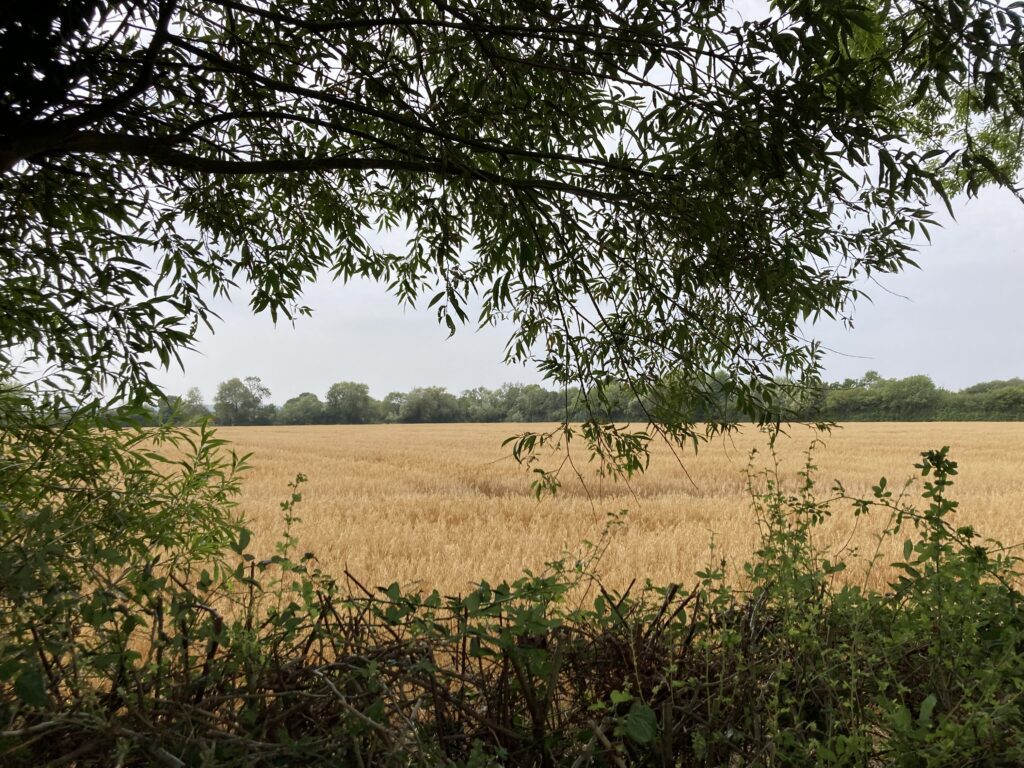
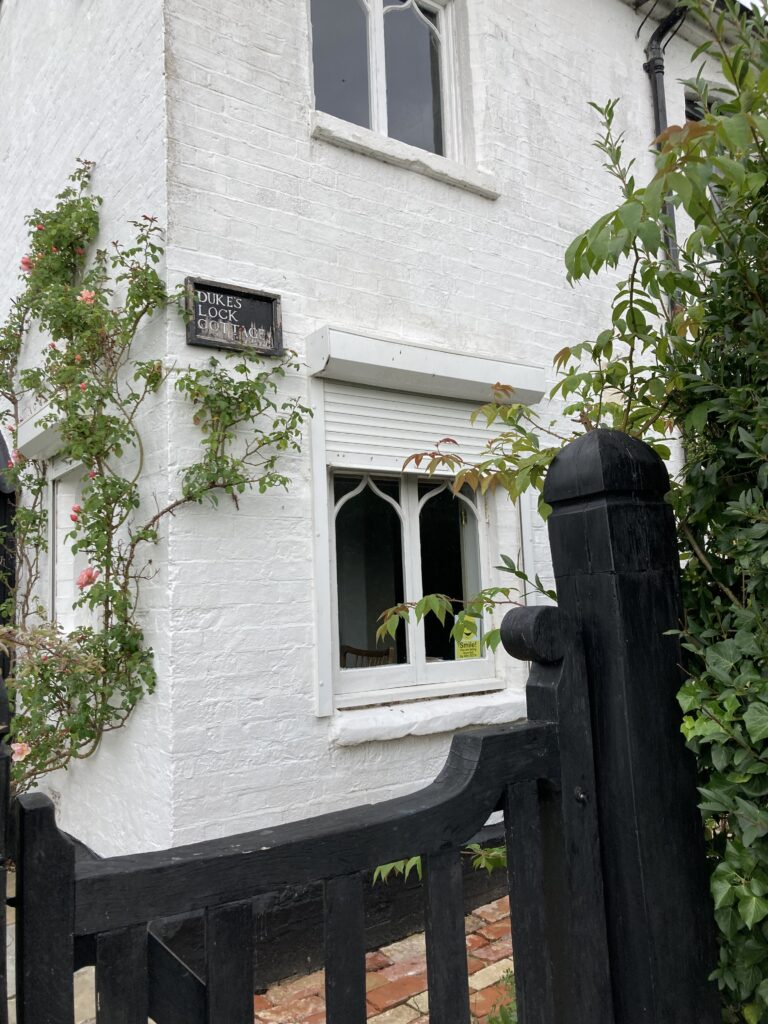
Duke’s Lock Cottage – where the cut links the canal to the Thames.
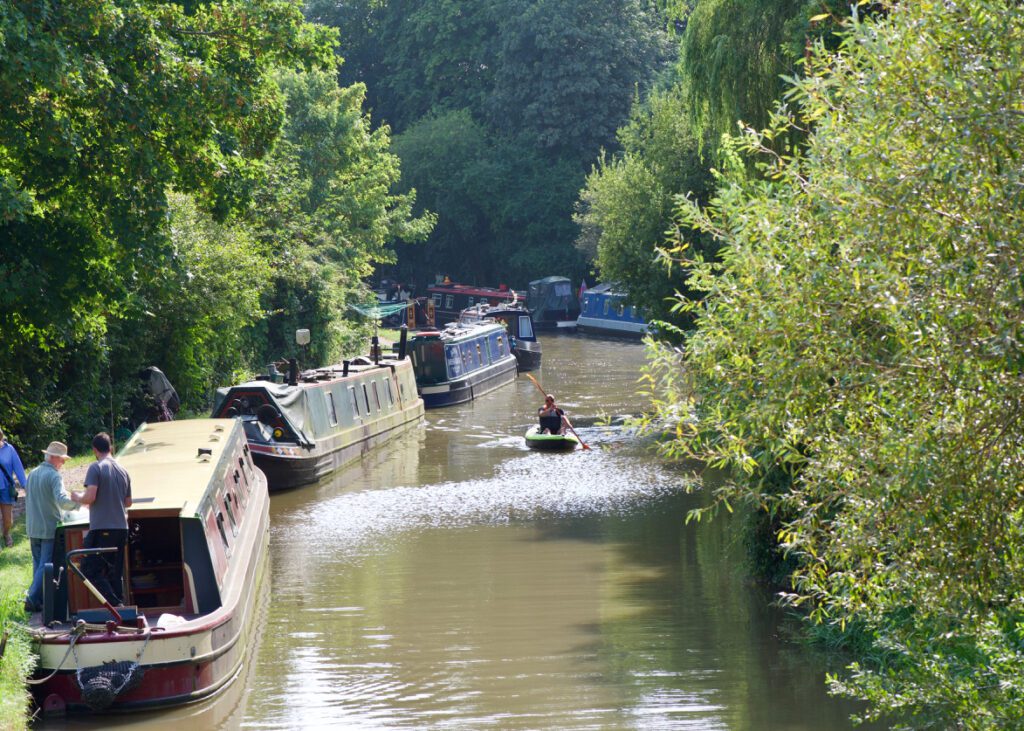
Narrowboats at Thrupp.
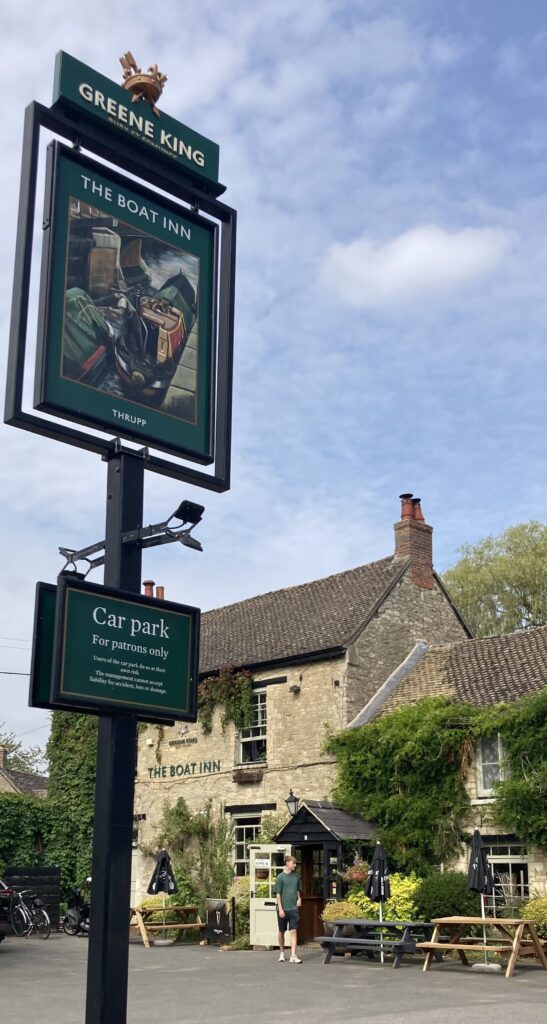
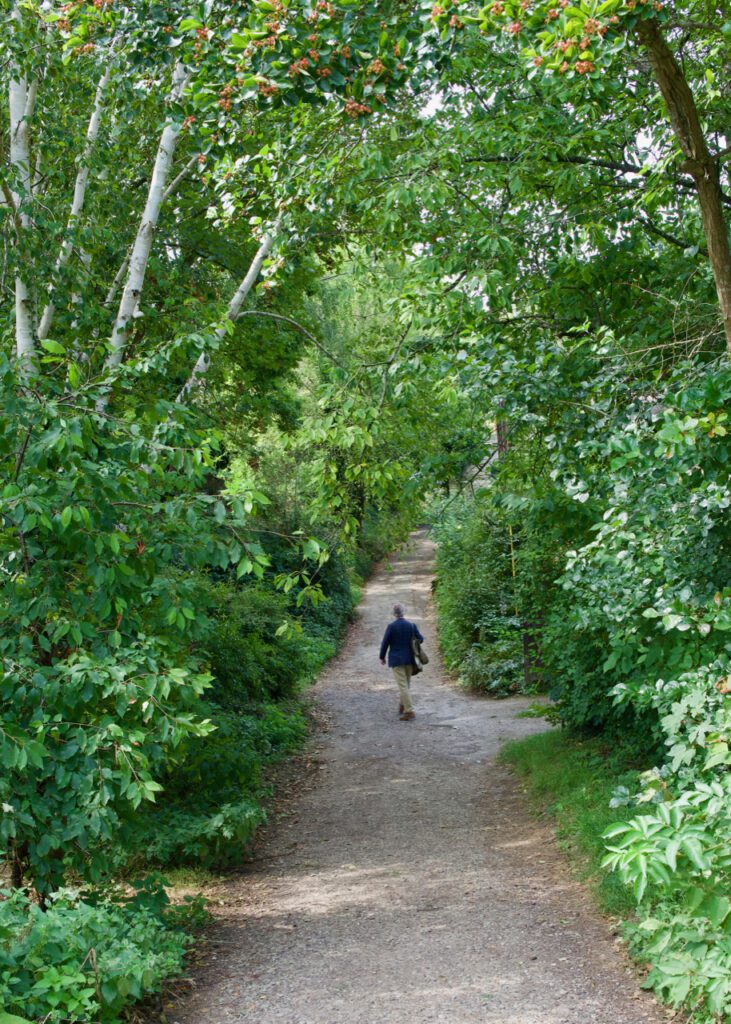
Colin heading up to Shipton-on-Cherwell
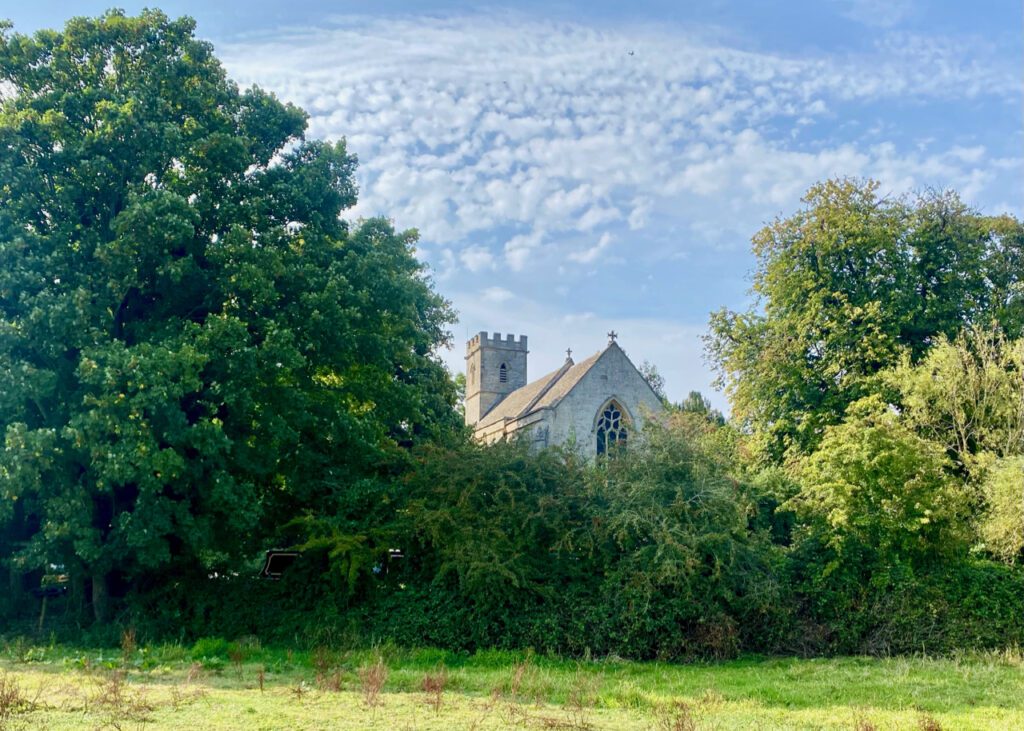
The Church of the Holy Cross
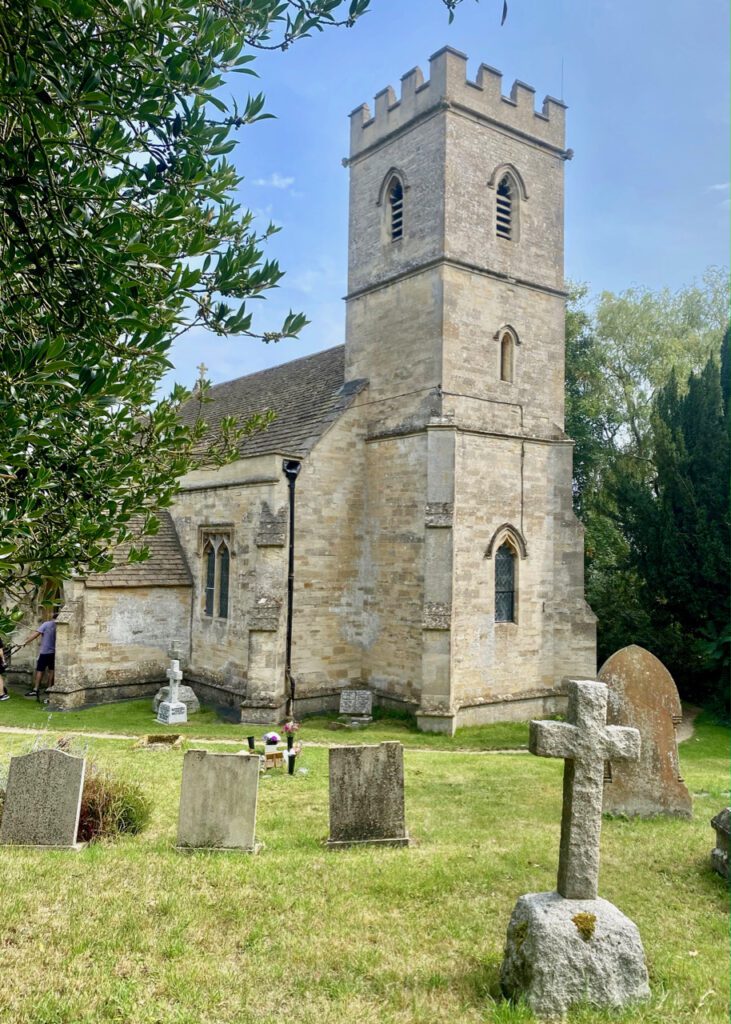

Part of the brass plaque on the memorial chancel screen inside the church to William Turner of Oxford.
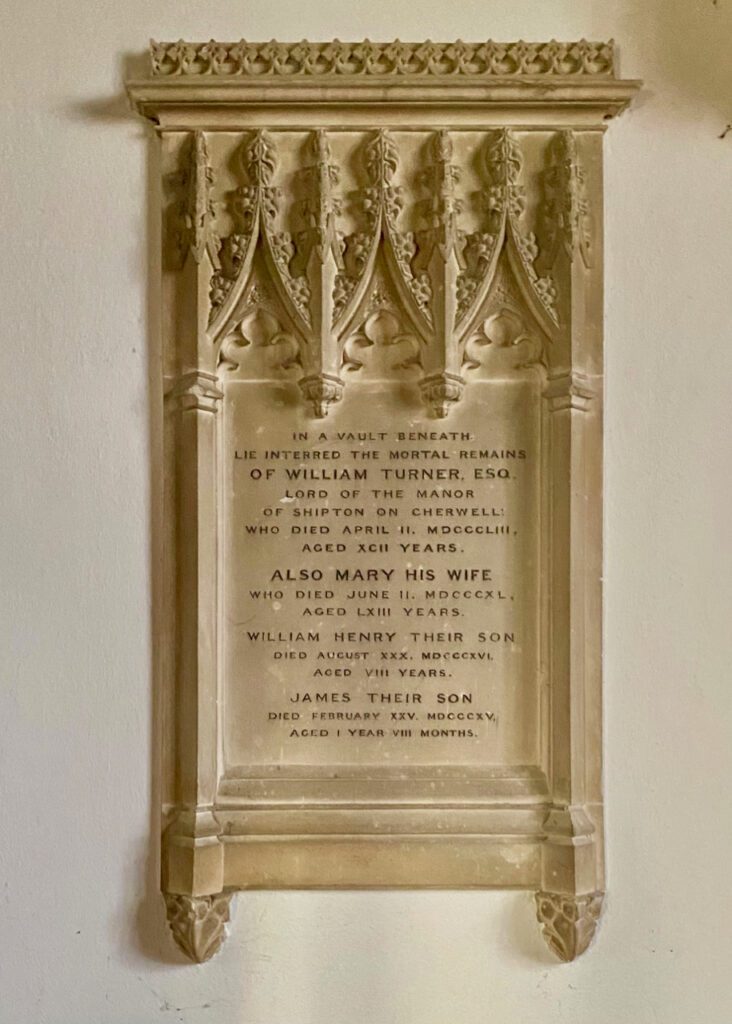
The memorial inside the church to William Turner’s uncle, Lord of the Manor. Also his wife and two children who died aged 8 and 1.
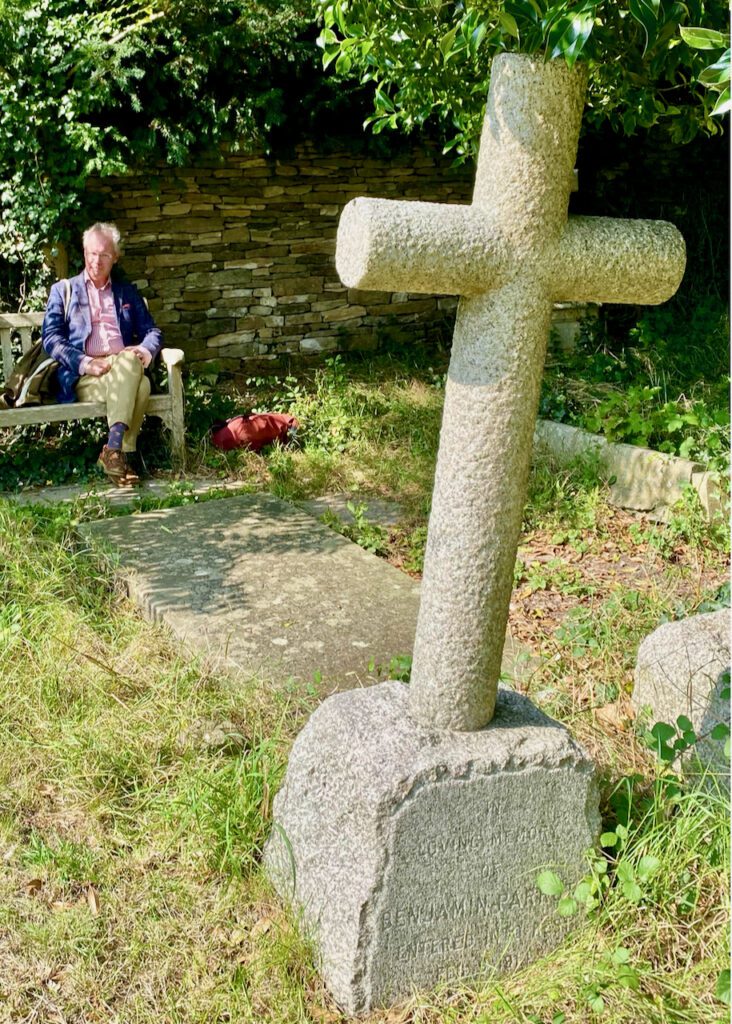
Colin at the end of our journey sitting in front of Turner’s tomb. He is buried with his wife Elizabeth Illott, who he married at Shipton in 1824 .
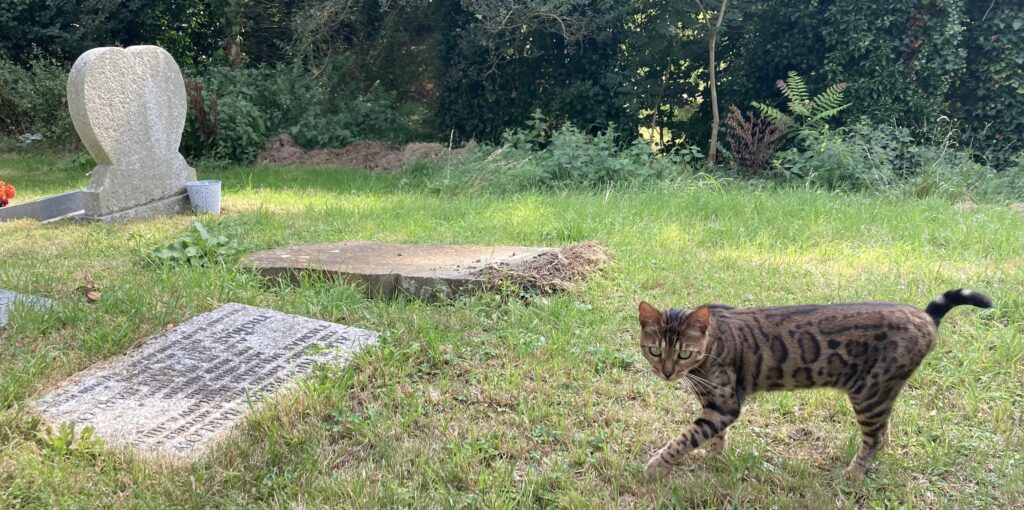
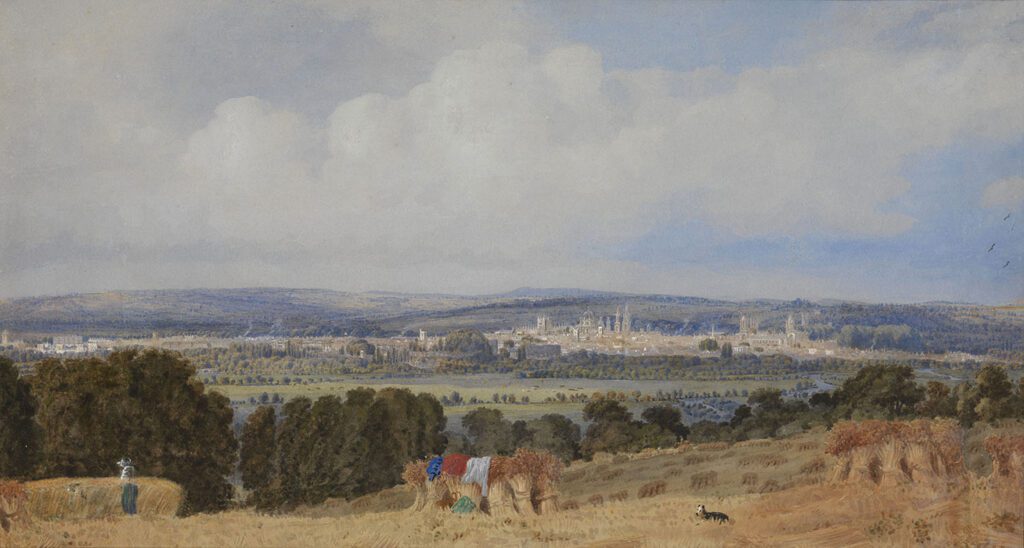
Image credit: Oxford from Hinksey Hill by William Turner of Oxford (Private Collection)
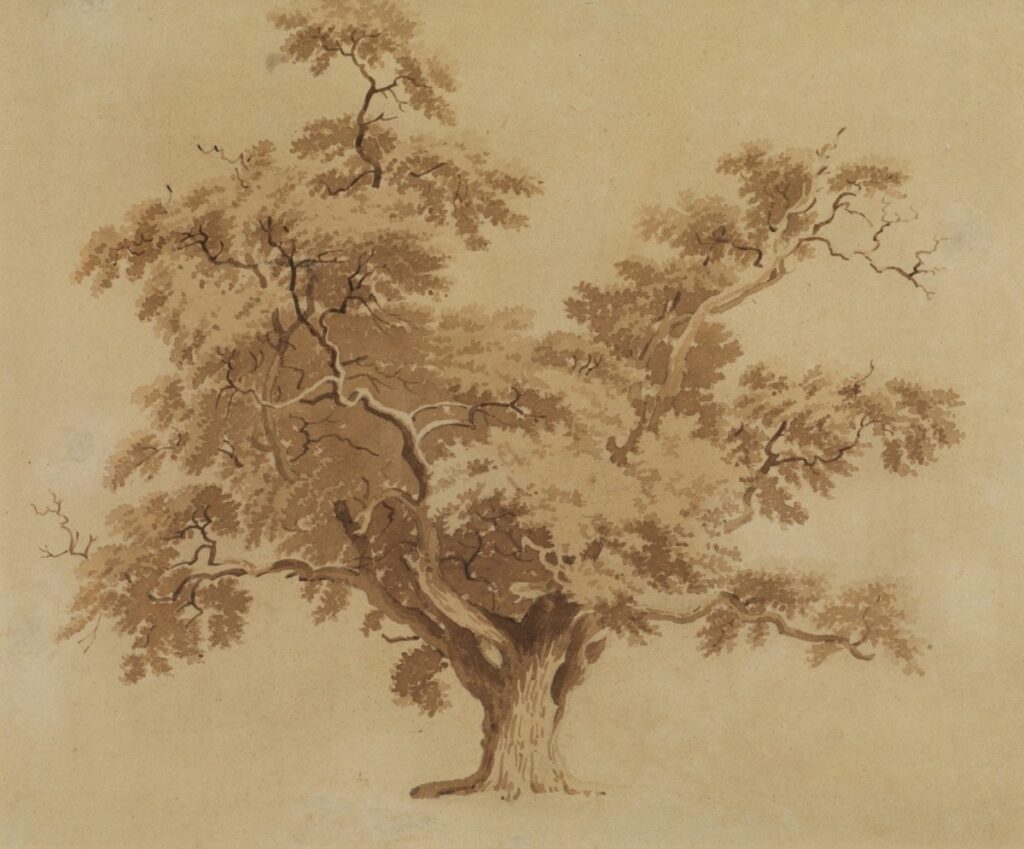
Image credit: Oak Tree by William Turner of Oxford (The Courtauld)
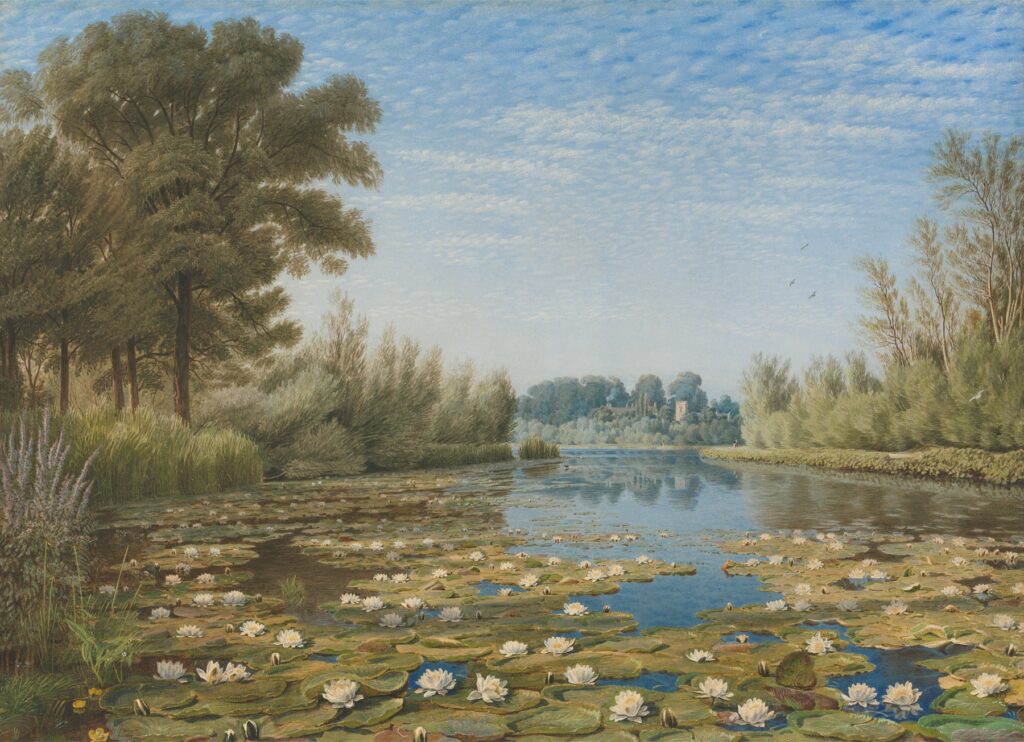
Image credit: Scene near Shipton-on-Cherwell by William Turner (Yale Centre for British Art)
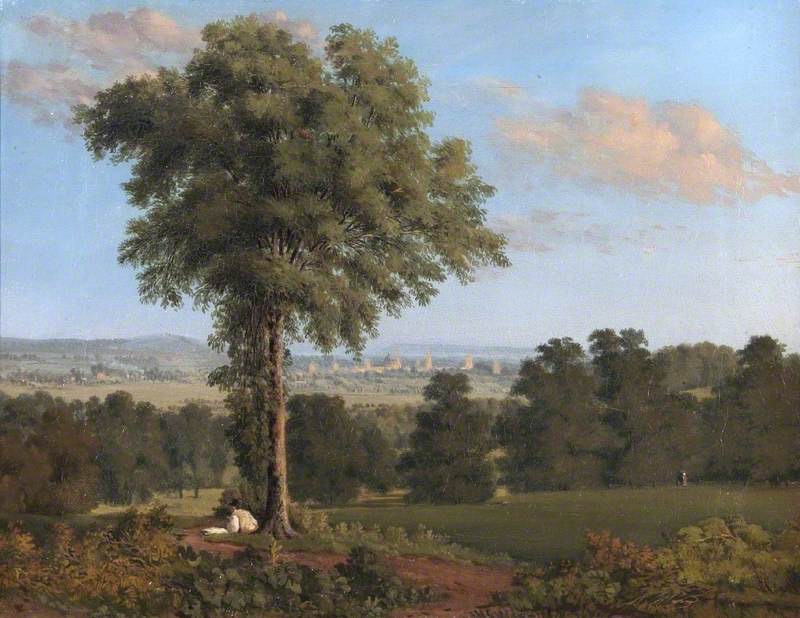
Image credit: Landscape with distant view of Oxford by William Turner (Oxfordshire County Museum Services) Although Turner was known for his watercolours, he also painted in oils as he did here.
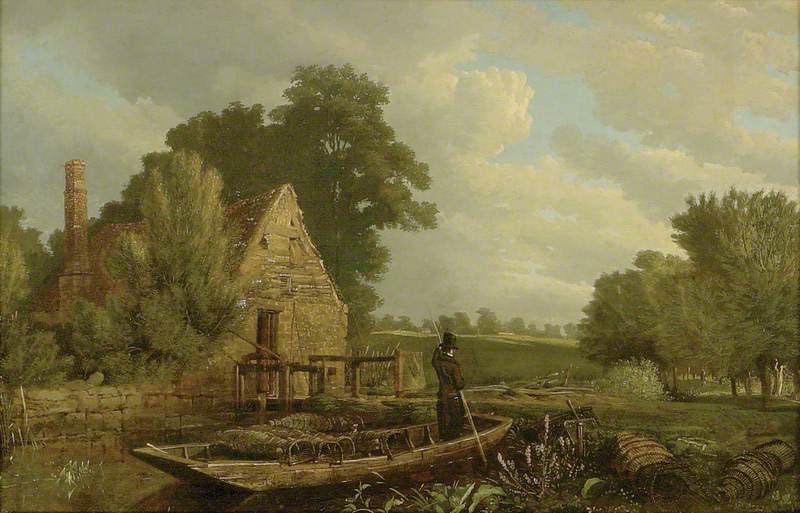
Image credit: King’s Mill on the Cherwell by William Turner of Oxford (Ashmolean Museum) Another oil painting it depicts a man on a punt carrying eels traps. Turner was eager to record the old way of life.

Image credit: Self portrait by William Turner of Oxford. The only portrait known to exist and probably painted at the time of his marriage. (Ashmolean Museum)
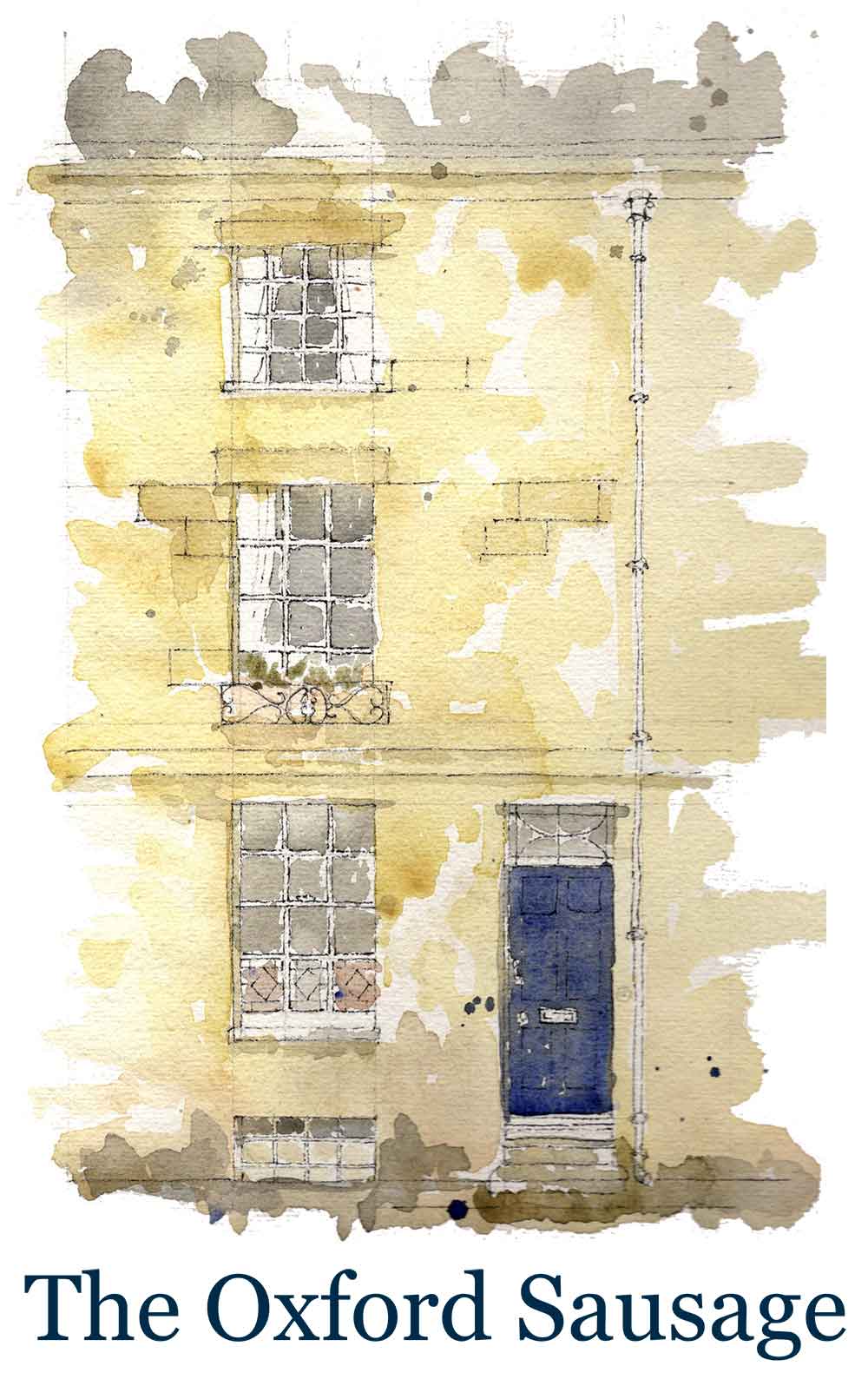
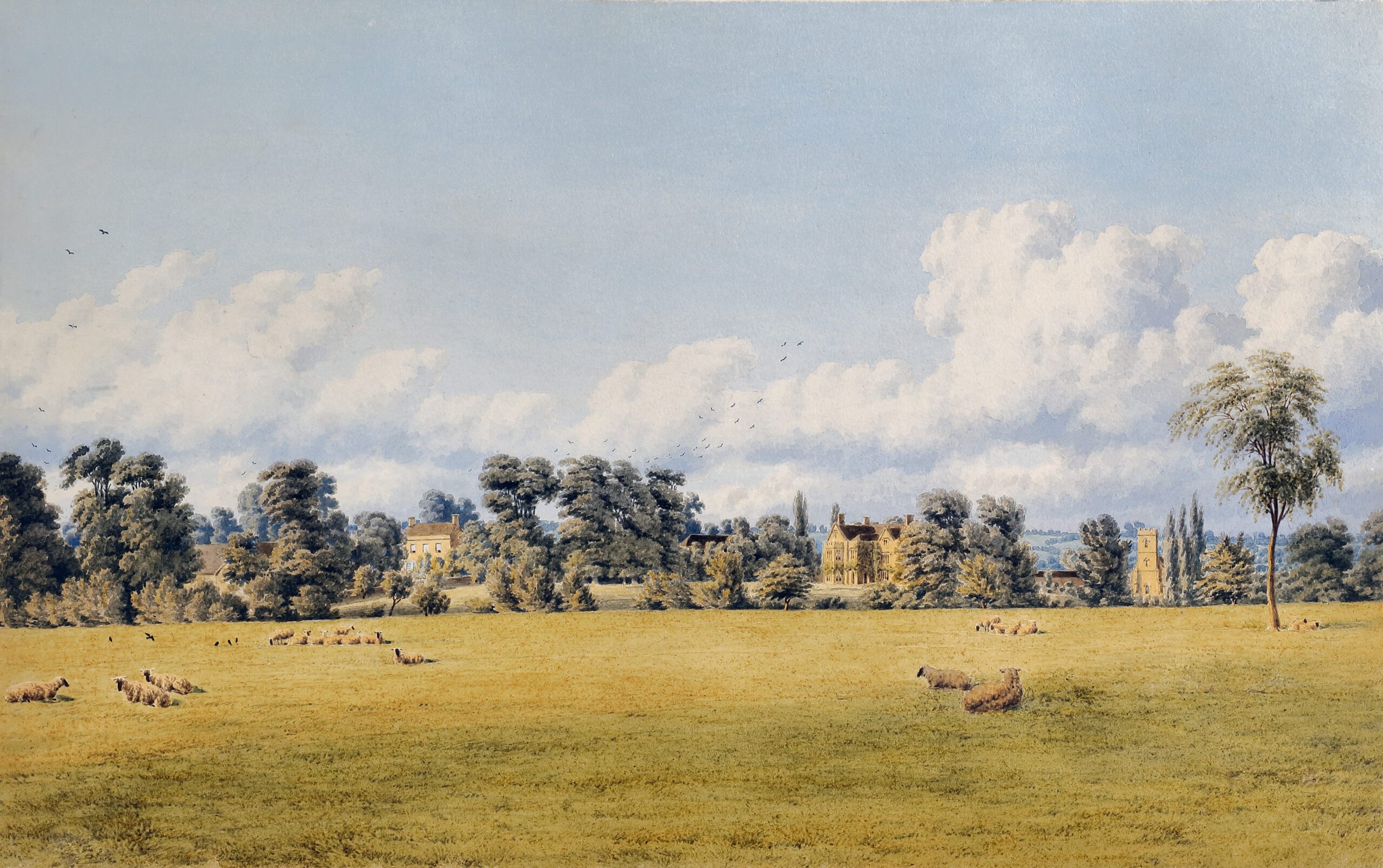
7 Comments
Join the discussion and tell us your opinion.
Great stuff. Like others, I had got the wrong end of the stick about the Turner plaque on St John street. And nice to think of you slogging up the canal to Thrupp. It’s one of my favourite Oxford walks and I did it just the other day.
I don’t know whether you noticed, but that curved concrete bridge (your fifth picture) has got the most fantastic acoustics – make sure to break into song next time you pass beneath it!
Lovely! I enjoyed learning more about Turner and also retracing a walk I know so well. A joy to see the eel traps & the Cherwell full of waterlilies. That bit of the Cherwell is still full of wildflowers – and now I shall be looking out for waterlilies next time I walk there!
Are there still water lilies growing in the River Cherwell, anybody?
Dear Oxford Sausage, I very much enjoyed reading your latest article about your William Turner of Oxford walk.
You wrote in passing that ‘…..he never once painted the canal or the railway that was to arrive later. His was the countryside pre-Industrial Revolution’.
I am the proud owner of a Turner water colour of Rewley Abbey in 1851, just as the Buckinghamshire Railway/LNWR was about to build the Rewley Road Station. Look closely and you will see Isis Lock on the canal with its roving bridge and just to its left the stone bridge built by the LNWR for the canal company over what is now called the Castle Mill Stream (the original Isis) to allow barge horses to use a new towpath to the Thames navigation. The stone bridge was later replaced by the current metal bridge although the original ends of the stone parapets were retained. Interestingly the site had been clearly laid out for a housing development before the LNWR acquired it.
Hi there and thanks for Sausage. William Turner of Oxf is still lauded in Thrupp and exploited where possible to help repairs to Holy Cross. You and Colin H May enjoy a note we made in 2016:
‘We paid a visit to the Ashmolean to inspect some books of William Turner’s drawings, in the hope of finding one of Holy Cross, and his talent was prodigious. Indeed, at least one of the portfolios was presented by John Ruskin and embossed with an attribution to JMW Turner. The drawings were re-attributed to William Turner of Oxford some ten or 20 years ago but (as amateurs) our group could see why the two artists might be confused as the drawing is in many cases superb. Actually, the curator murmured as we left that attribution is never an exact science, so an enjoyable frisson of mystery lingers!’
Ruskin himself wrote in 1851: ‘I am sorry not to have before noticed the quiet and simple earnestness, and the tender feeling, of the mountain drawings of William Turner of Oxford.’
Interesting book-keeping challenge for the Ashmolean as JMWT drawings would presumably be worth a lot more.
And there is of course a permanent show of Turner’s watercolours upstairs in the Oxford Town Hall, in the passage outside the council chamber. The majority of them were given by Sir Michael Sadler (1861-1943) in memory of his wife, and include a fine range of landscapes from Oxford to the south coast. Sadler was a noted educationalist, Vice-Chancellor of Leeds (to whom he left a significant collection of modern art) and Master of University College; he was also one of the founders of the Oxford Preservation Trust.